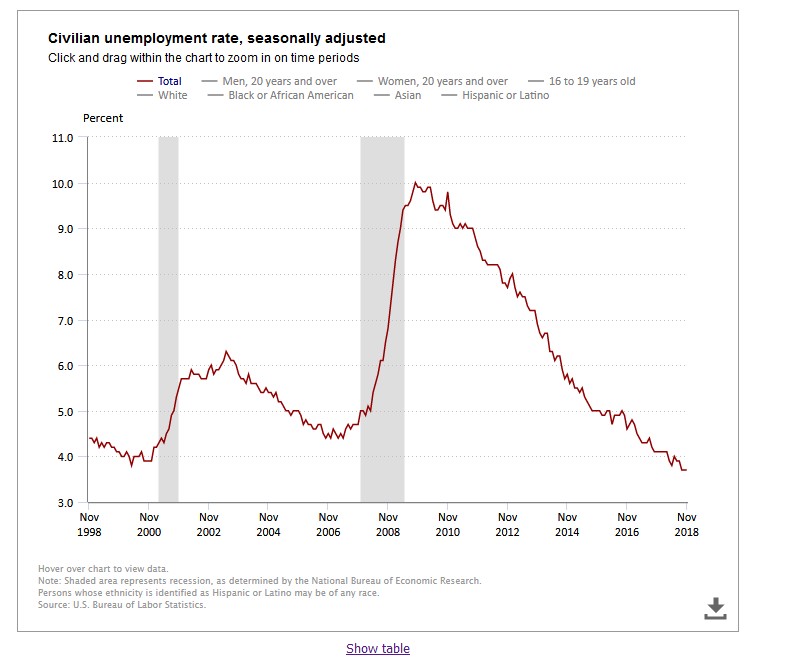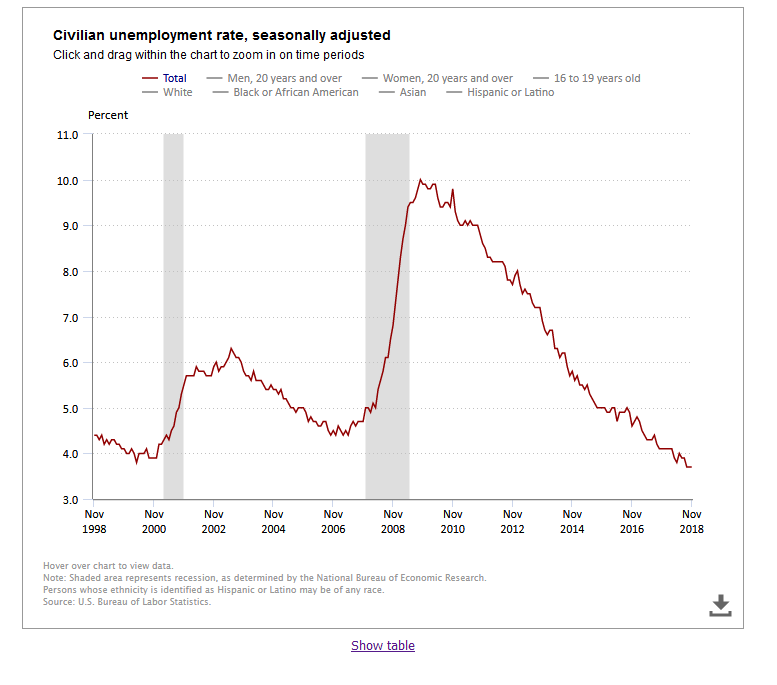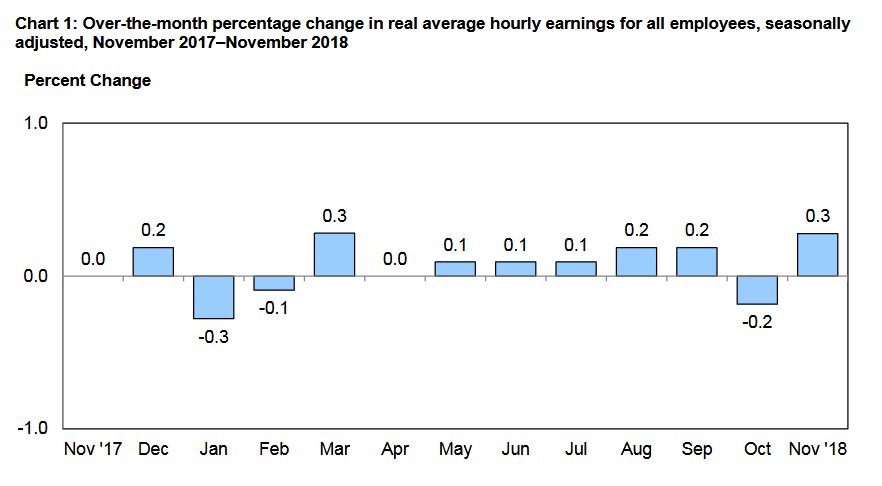Employment Blog December 2018
This employment blog comes from the US Department of Labor, Bureau of Labor Statistics. Nonfarm payroll employment rose by 155,000 in November, and the unemployment rate held at 3.7 percent. Job gains occurred in health care, in manufacturing, and in transportation and warehousing. Incorporating revisions for September and October, which decreased nonfarm payroll employment by 12,000 on net, monthly job gains have averaged 170,000 over the past 3 months. This is detailed in Charts 1 and 2 below.


Health care employment grew by 32,000 over the month and has expanded by 328,000 over the year. Within the industry, ambulatory health care services (+19,000) and hospitals (+13,000) added jobs in November.
Manufacturing employment rose by 27,000 in November, with job gains in chemicals (+6,000) and primary metals (+3,000). Over the past 12 months, manufacturing has added 288,000 jobs.
Employment in transportation and warehousing increased by 25,000 over the month and was up by 192,000 over the year. In November, job growth occurred in couriers and messengers (+10,000) and in warehousing and storage (+6,000). These two industries accounted for about two-thirds of the employment growth in transportation and warehousing over the past year.
Employment in professional and business services continued to trend up in November (+32,000). Over the past 12 months, this industry has added 561,000 jobs.
Retail trade employment changed little in November (+18,000). Employment in general merchandise stores–which includes department stores, warehouse clubs, and supercenters–rose by 39,000 over the month. Miscellaneous store retailers also added jobs (+10,000). These gains were partially offset, however, by job losses in clothing and clothing accessories stores (-14,000); electronics and appliance stores (-11,000); and sporting goods, hobby, and book stores (-11,000).
Employment in other major industries–including mining, construction, wholesale trade, information, financial activities, leisure and hospitality, and government–showed little change over the month.
October 2017 to October 2018, the Consumer Price Index for All Urban Consumers (CPI-U) increased by 2.5 percent (on a seasonally adjusted basis).
Real average hourly earnings for all employees increased 0.3 percent from October to November, seasonally adjusted, the U.S. Bureau of Labor Statistics report ed today. This result stems from a 0.2-percent increase in average hourly earnings combined with no change in the Consumer Price Index for All Urban Consumers (CPI-U). Real average weekly earningsdecreased 0.1 percent over the month due to a 0.3-percent decrease in the average workweek offsetting the increase in real average hourly earnings. This is detailed in Chart 3 below.

